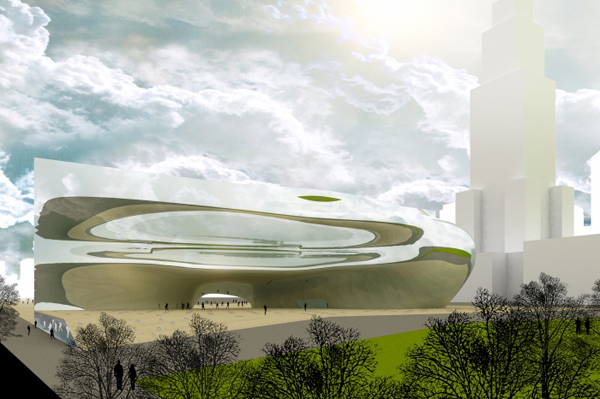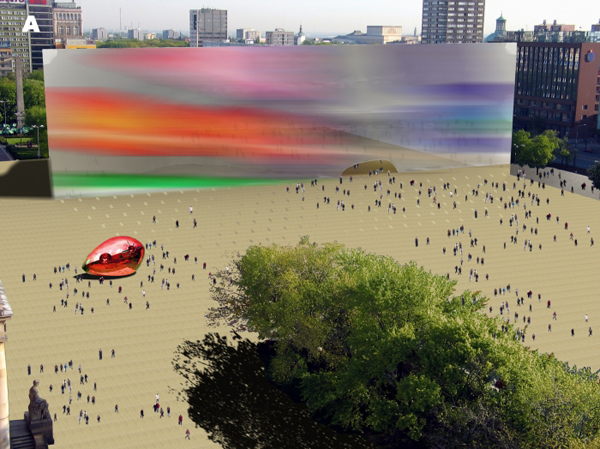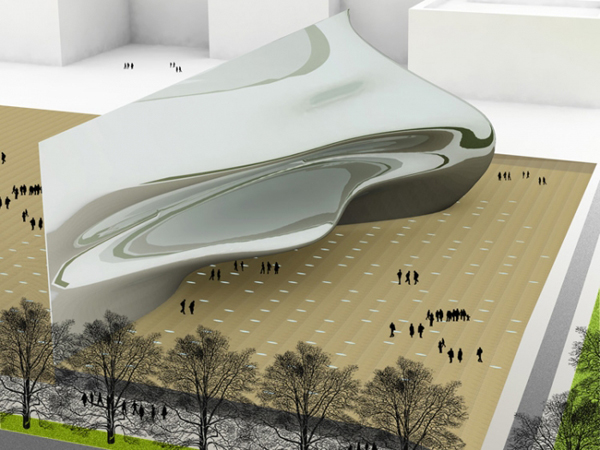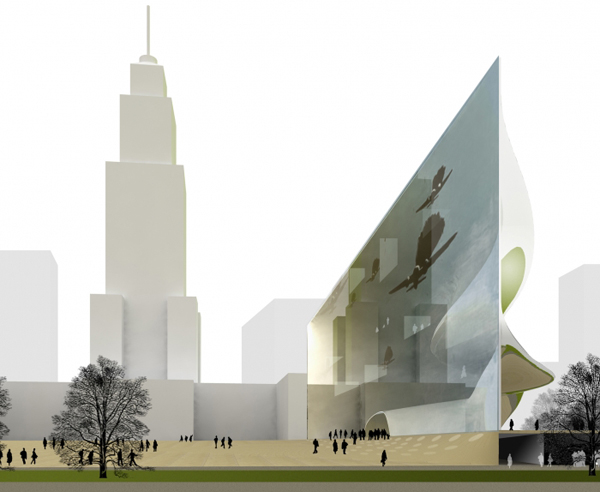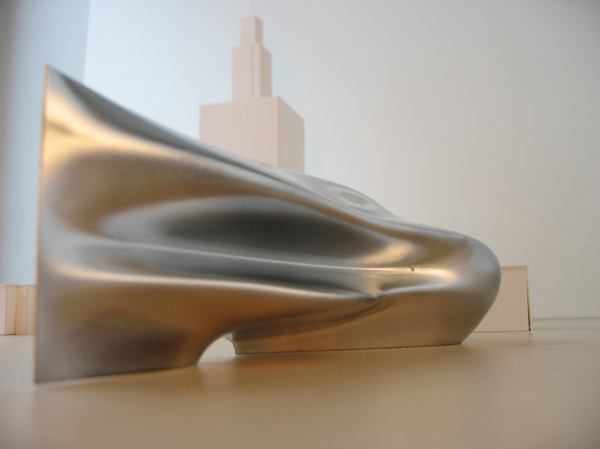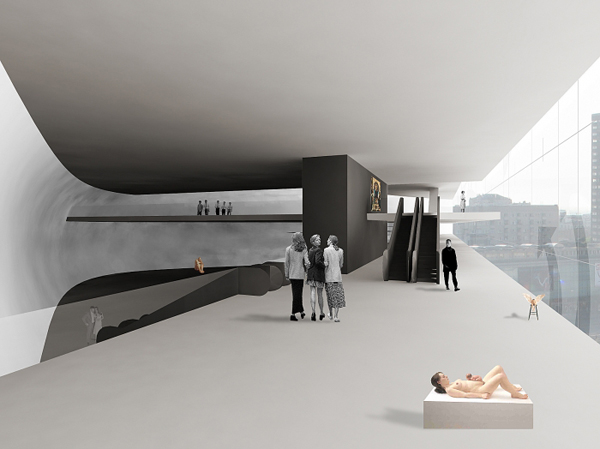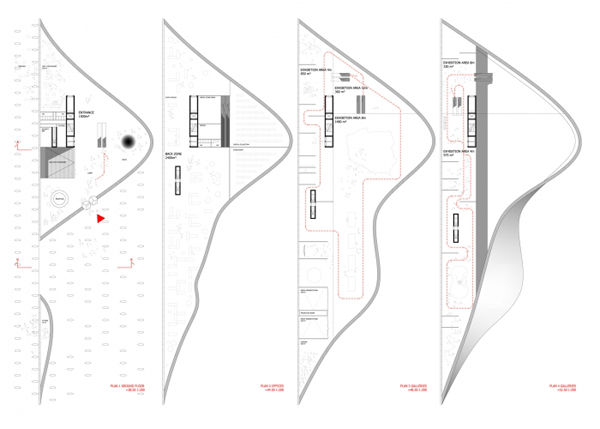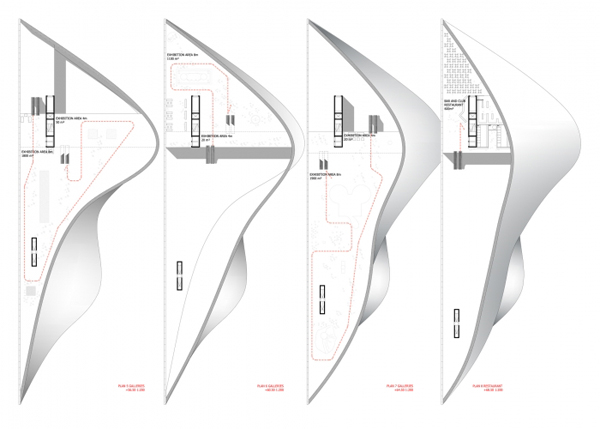Located in Warsaw city centre, the new MoMa Museum would be a landmark cultural institution for the new millennium. Designed by Finish ALA Architecture, the building is a strong statement, capable of challenging the iconic status of the neighboring Palace of Culture, built in the Soviet-era.
The project uses reflectiveness and transparency to create contrasting effects, responding to the definition of exhibition spaces, as well as to the surrounding urban fabric:
“The project has only two surfaces. The glass wall represents and enables the digital world of direct, location-independent communication. It works locally as a gigantic shop window and display board, utilizing visual communication methods from transparency to manual manipulation and digital projection. It reveals, protects and enhances the physical, “real” art behind it.
The sculptural curving wall is a solid and permanent feature born out of the current conditions and inspirations. It is real and mesmerizing, and will remain as a document of our time while the glass wall keeps evolving and the contents changing. It is clad in a chromium-like finish, thus literally reflecting the local surroundings in a unique way. The museum interior is delineated by these two surfaces. It is a combination of their different qualities. It has generic and unique aspects, light and dark moments and permanent and temporary features. The art can be totally isolated inside, or it can be totally exposed to the outside. The art can be inspired by the space and take on its unique qualities, or it can ignore the space and turn it into a new condition just for itself. The amount and quality of light can be modified by manipulating the glass wall. The large gallery spaces can be divided into smaller units, or the whole museum can act as one continuous space.”

